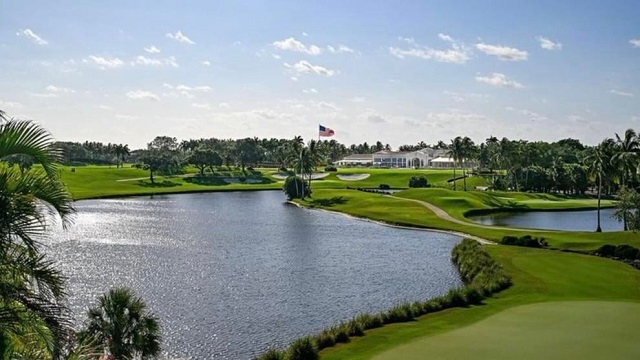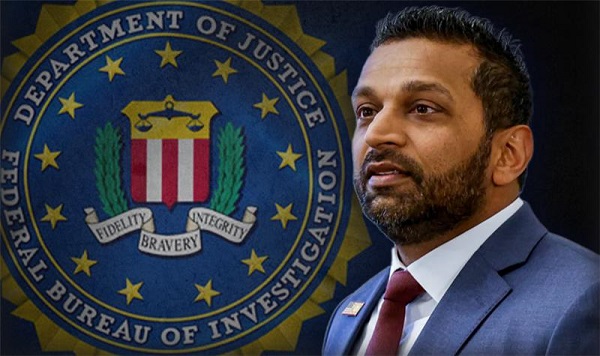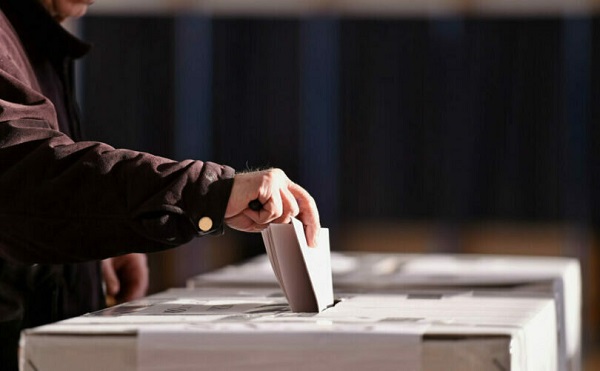International
FBI: Trump was playing golf when shots rang out. 2nd assassination attempt on Donald Trump’s life thwarted

From The Center Square
By
Trump was playing golf at his club when shots rang out
U.S. Secret Service agents shot at and later arrested a man with an AK-47 rifle near Donald Trump’s West Palm Beach, Fla., golf club Sunday afternoon while Trump was on the course. The FBI said it is investigating the incident as an attempted assassination of the former president, the second in two months.
Palm Beach County Sheriff Ric Bradshaw said at a news conference that the Secret Service alerted local authorities that shots were fired about 1:30 p.m. Sunday. A Secret Service agent who was monitoring the course a hole ahead of Trump noticed a man with a rifle pointing the barrel through a chain-link fence near shrubbery that surrounds the course, Bradshaw said. The agent fired on the alleged gunman, who was approximately 300 to 500 yards away from the former president. Trump, the Republican nominee for president, was rushed back to the clubhouse in a golf cart and was unharmed.
A witness told authorities he saw the gunman running from the scene to a car, and was able to get the car’s license plate, Bradshaw said. Agents were able to track the vehicle and arrested the suspect, Bradshaw said. He remains in custody. No other details were released about the suspect.
“Fortunately, we were able to locate a witness that came to us and said, ‘Hey, I saw the guy running out of the bushes. He jumped into a black Nissan, and I took a picture of the vehicle and the tank,’ which was great,” the sheriff said. “So we had that information, … put it out to the license plate readers, and we were able to get a hit on that vehicle on I-95 as it was headed into Martin County. We got a hold of Martin County Sheriff’s Office, alerted them, and they spotted the vehicle and pulled it over and detained the guy.”
Authorities found the rifle, a scope, two backpacks and a GoPro camera in the bushes where the gunman was hiding.
“The FBI has assumed the role as the lead federal law enforcement agency in the investigation of the incident that occurred earlier today at Trump International Golf course here in West Palm Beach, Florida,” Jeffrey Veltri, special agent in charge of the FBI Miami field office, said at the news conference. “We’ve deployed a number of resources, including investigative teams, crisis response team members, bomb technicians and evidence response team members as well.”
Trump told Fox News that he was on the 5th hole when he heard gunshots.
“Tell everybody I am fine and the Secret Service did a great job,” Trump told Fox News.

Trump International Golf Club, West Palm Beach, Fla.
The West Palm Beach golf club is less than five miles from Trump’s Mar-a-Lago home.
Bradshaw said that if Trump were a sitting president, there would have been more security around the perimeter of the golf course
Sunday’s incident occurred two months after Trump was the target of an assassination attempt at a campaign rally in Butler, Pa. Trump was grazed by a bullet in his ear in the Pennsylvania shooting just two days before the start of the Republican National Convention. The suspect in the earlier assassination attempt was shot and killed at the scene.
The Secret Service was widely criticized for its lax security efforts after the Pennsylvania attempt. Kimberly Cheatle, the director of the U.S. Secret Service, resigned under heavy pressure.
This is a developing story.
Business
Stripped and shipped: Patel pushes denaturalization, deportation in Minnesota fraud

FBI Director Kash Patel issued a blunt warning over the weekend as federal investigators continue unraveling a sprawling fraud operation centered in Minnesota, saying the hundreds of millions already uncovered represent “just the tip of a very large iceberg.”
In a lengthy statement posted to social media, Patel said the Federal Bureau of Investigation had quietly surged agents and investigative resources into the state well before the scandal gained traction online. That effort, he said, led to the takedown of an estimated $250 million fraud scheme that stole federal food aid intended for vulnerable children during the COVID pandemic.
According to Patel, the investigation exposed a network of sham vendors, shell companies, and large-scale money laundering operations tied to the Feeding Our Future case. Defendants named by the FBI include Abdiwahab Ahmed Mohamud, Ahmed Ali, Hussein Farah, Abdullahe Nur Jesow, Asha Farhan Hassan, Ousman Camara, and Abdirashid Bixi Dool, each charged with offenses ranging from wire fraud to conspiracy and money laundering.
Patel also said Abdimajid Mohamed Nur and others were charged in a separate attempt to bribe a juror with $120,000 in cash. He noted that several related cases have already resulted in guilty pleas, prison sentences of up to 10 years, and nearly $48 million in restitution orders.
Despite those outcomes, Patel warned the case is far from finished.
“The FBI believes this is just the tip of a very large iceberg,” he said, adding that investigators will continue following the money and that the probe remains ongoing. Patel further confirmed that many of those convicted are being referred to immigration authorities for possible denaturalization and deportation proceedings where legally applicable.
The renewed focus follows a viral video circulated by independent journalist Nick Shirley, which appeared to show multiple childcare and learning centers operating as empty or nonfunctional storefronts. The footage sparked immediate backlash from Republicans, including Vice President JD Vance.
House Majority Whip Tom Emmer accused Minnesota Gov. Tim Walz of sitting idle while massive sums were stolen from taxpayers. Walz addressed the allegations during a November press conference, before the full scope of the fraud became public, saying the scandal “undermines trust in government” and threatens programs meant to help vulnerable residents.
“If you’re committing fraud, no matter where you come from or what you believe, you are going to go to jail,” Walz said at the time.
Authorities say the alleged schemes date back to at least 2015, beginning with overbilling Minnesota’s Child Care Assistance Program and later expanding into Medicaid-funded disability and housing programs. One such housing initiative, aimed at helping seniors and disabled residents secure stable housing, was shut down earlier this year after officials cited what they described as large-scale fraud.
The fallout has already reached the federal level. Last month, President Trump announced the suspension of Temporary Protected Status for Somali nationals, arguing that Minnesota had become a hub for organized welfare fraud and money laundering activity.
Business
Mainstream media missing in action as YouTuber blows lid off massive taxpayer fraud

Vice President JD Vance is giving public credit to a YouTube journalist for doing what he says legacy media and elite institutions have failed to do: follow the money in Minnesota. In a post on X, Vance praised independent reporter Nick Shirley for digging into alleged fraud networks tied to the state, saying Shirley “has done far more useful journalism than any of the winners of the 2024 Pulitzer prizes.” The comment was a direct response to a video Shirley shared online documenting what he described as widespread fraud, with Shirley claiming his team identified more than $110 million in suspicious activity in a single day while confronting facilities allegedly receiving millions in public funds.
Shirley’s reporting has been circulating widely among conservatives, with commentators amplifying clips of him visiting supposed daycare and education centers that appeared inactive despite receiving massive federal aid. Conservative media personality Benny Johnson said Shirley had exposed more than $100 million in Minnesota Somali-linked fraud routed through fake daycare and healthcare fronts, adding to the pressure on state leadership. The issue gained further traction after Tom Emmer, Minnesota’s top House Republican, demanded answers from Gov. Tim Walz following a viral clip showing Shirley confronting workers at an alleged daycare in South Minneapolis. Shirley reported the center, called the “Quality Learning Center,” showed no visible activity despite claims it served up to 99 children, and even misspelled “learning” on its signage. As Shirley approached, a woman inside was heard shouting “Don’t open up,” while incorrectly accusing him of being an ICE agent.
🚨 Here is the full 42 minutes of my crew and I exposing Minnesota fraud, this might be my most important work yet. We uncovered over $110,000,000 in ONE day. Like it and share it around like wildfire! Its time to hold these corrupt politicians and fraudsters accountable
We ALL… pic.twitter.com/E3Penx2o7a
— Nick shirley (@nickshirleyy) December 26, 2025
The controversy builds on earlier reporting from City Journal, which published a November investigation citing federal counterterrorism sources who said millions of dollars siphoned through Minnesota fraud schemes had been sent overseas, with some of the money allegedly ending up in the hands of Al-Shabaab. One confidential source quoted in the report bluntly claimed, “The largest funder of Al-Shabaab is the Minnesota taxpayer.” Since that report, the scrutiny has widened inside the Trump administration. Treasury Secretary Scott Bessent has announced that the Treasury Department is examining whether Minnesota taxpayer funds were diverted to terrorist-linked groups, while Education Secretary Linda McMahon has publicly called on Walz to resign amid separate allegations of large-scale education fraud within the state’s college system.
Taken together, the attention from Vance, congressional Republicans, and multiple federal agencies has elevated Shirley’s reporting from viral internet content to a flashpoint in a broader debate over fraud, accountability, and the role of independent journalists. For the vice president, the message was clear: real accountability sometimes comes not from prize committees or press rooms, but from outsiders willing to ask uncomfortable questions and stand in front of locked doors with a camera rolling.
-

 Agriculture1 day ago
Agriculture1 day agoEnd Supply Management—For the Sake of Canadian Consumers
-

 Digital ID1 day ago
Digital ID1 day agoCanadian government launches trial version of digital ID for certain licenses, permits
-

 Alberta1 day ago
Alberta1 day agoAlberta Next Panel calls to reform how Canada works
-

 Business23 hours ago
Business23 hours agoThe “Disruptor-in-Chief” places Canada in the crosshairs
-

 International20 hours ago
International20 hours agoGeorgia county admits illegally certifying 315k ballots in 2020 presidential election
-

 Artificial Intelligence24 hours ago
Artificial Intelligence24 hours agoUK Police Pilot AI System to Track “Suspicious” Driver Journeys
-

 Energy19 hours ago
Energy19 hours ago‘The electric story is over’
-

 International1 day ago
International1 day agoWorld-leading biochemist debunks evolutionary theory






